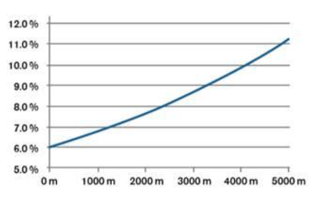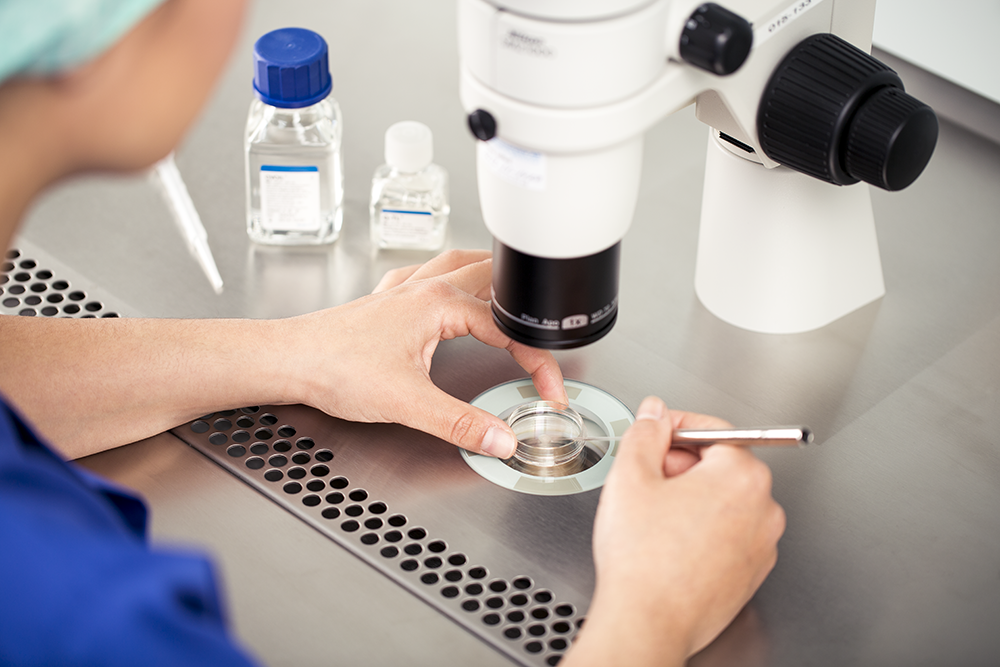Controlling pH in embryo culture media is often perceived as difficult by embryologists. Still, to maintain the optimal physiological pH range of 7.20 – 7.40 is essential to maintain oocyte and embryo viability. Many functions in embryo cells such as glycolysis, protein metabolism, cytoskeletal dynamics, cell transport and epigenetic functions are all dependent on pH.
There are several factors to understand which all contribute to the pH in media. Below you find some of them and how to work around this problem.
Basic chemistry
First, we need to understand the basic chemistry behind how pH is attained in media. Culture media contain sodium bicarbonate (NaHCO3) that dissociates in water according to:
NaHCO3 + H2O↔H2CO3 + Na+ + OH-
When CO2 is added to the medium it will result in an equilibrium which will influence the pH-value of the culture medium (pH is -log [H+]):
CO2(g) + H2O ↔ H2CO3 ↔ HCO3- + H+
As the result of the above reaction, when the CO2 level is increased in the incubator, more H+ will be formed and pH will go down. Hence it is the amount of CO2 that drives the pH value of the culture medium. It is therefore of utmost importance to use the CO2 level recommended by the media manufacturer as a starting point for your embryo culture CO2 settings. 6% CO2 should be used for Vitrolife media products.
It is also important to understand and appropriately control the related equipment and consumables such as incubators, CO2 measurement devices and gas. Such considerations are listed below.
To measure CO2 in humid incubators
Commonly, devices with an infrared sensor is used to measure CO2 in incubators. However, infrared sensors can be damaged by the water vapor molecules in humid incubators and the water vapor must be removed from the gas sample before CO2 is measured. CO2 measuring devices present data as a percentage of total gas present, the CO2 concentration of the dry sample will therefore be slightly higher than in the humified atmosphere inside the incubator and this must be corrected for.
Each CO2 measurement device will provide a correction factor, but as an approximate estimate a measurement of about 6.3-6.5 % CO2 measured in the dry sample would be equivalent to 6.0 % CO2 in the humid incubator. Without this correction one will always overestimate the CO2 level in a humified incubator and consequently, may culture embryos in a higher than desired pH. This is not the case if you are using dry incubators.
The use of pre-mixed gases
One may think that CO2 and pH is not a problem when pre-mixed gas of 6% CO2 and 5% 02 is used. But if you check the certificate provided by the gas supplier you will find that variations in CO2 percentage occur between gas flasks, sometimes as much as + 0.4%. This deviation from 6% CO2 can cause rather large pH deviations particularly in combination with measuring the CO2 level in a humid incubator and not using the humidity correction factor. Always read the certificate of analysis when you install a new gas flask and adjust accordingly. If possible, discuss with your gas supplier so that they provide you with flasks containing the correct CO2 concentration.
Serial connection of incubators
Yet another factor to consider is how the gas supply to the incubators is designed in the IVF laboratory. Are the incubators connected in a series from the CO2 flask? If so, it should be ensured that those incubators farthest from the supply still have the necessary pressure and gas flow. If not, this can explain differences in the pH of media in the proximal and distal incubators.
Altitude
The 6% CO2 recommendation is valid for clinics at or near sea level. If your clinic is located at a higher altitude the CO2 level in the incubator must be increased due to the lower partial air pressure above sea level according to the graph below.

Graph 1. Indication of the required increase in CO2 percentage to obtain a pH of approximately 7.30 with increasing altitude.
You can read more about pH and embryo culture at high altitudes here: https://blog.vitrolife.com/togetheralltheway/considerations-for-embryo-culture-at-high-altitude
Conclusion
If you fail to maintain correct pH in embryo culture media the results will be decreased embryo cleavage rates, perturbations in the regulation of cytoskeletons and an inability of the embryos to maintain energy production. In other words, compromised embryo viability resulting in suboptimal pregnancy and implantation rates.
How can you ensure that pH is correct in your embryo culture incubators? Since there are so many factors that influence pH the only way to be sure that your patient’s embryos are cultured within the optimal pH range of 7.20-7.40 is to frequently measure pH using a calibrated appropriate pH-meter and to measure in adequately pre-equilibrated media. Measuring pH is a task that requires knowledge and experience and training is the only way to achieve this.
You can read more about quality in the IVF-lab here:
Contact our representative or visit www.vitrolife.com/support/technical-supportfor more information.
Topics: Embryo culture & transfer
Written by Dr. Ann-Helene Jakobsson
Ann-Helene has a PhD in Genetics and started her career in IVF as Lab Manager at the private clinic Fertilitetscentrum in Sweden. Ann-Helene is a popular lecturer at Vitrolife workshops where she makes complicated matters easy to understand.
